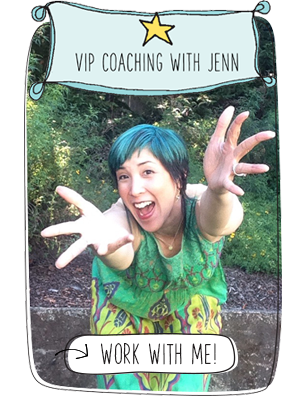photo by Stefanie Renee
Guest post by licensed Right-Brain Business Plan Facilitator Laura Burns
Growing up in a family of entrepreneurs, I spent much of my youth working helping with projects and learning about running a small business. That early training gifted me with excellent insight and business sense, but it didn’t spare me from learning how to run a business the hard way. It’s been a rollercoaster ride; a traffic jam’s worth of stop and go activity since I started my company. Laura Burns Consulting is not nearly where I want it to be, but I’m past the big hump. I’ve made it through the scary, brave, exciting, and ultimately terrifying jump into strange waters.
Along the way I’ve learned some lessons that were amazing opportunities to grow and become stronger. I know my experience isn’t unique, and I thought pulling the curtain back and letting everyone in on the conversation would be a great way to connect and commiserate. For newbie biz owners this might help steer you through the rocky waters of getting started.
Seasoned pros can read my experiences and remember when – maybe even comment with great tips and lessons they learned themselves. Either way, this post is for the creative entrepreneurs out there. You are amazing and inspiring, and regardless of where you are in your journey I know you’ll make it through stronger and better than ever. So here they are, my lessons learned. Enjoy, and please feel free to add your own in the comments.
It’s normal to be scared of failure, but don’t let it paralyze you.
What’s the worst that could happen? No, really. Take a moment and figure out the worst possible scenario that could happen to you if your business failed. Really think through the circumstances you might find yourself in. I’ve found that ignoring the reality of what could happen makes it much scarier. After doing this exercise with myself I was able to see that my worst-case scenario wasn’t that scary after all. By de-mystifying failure I was able to move through my fear and really allow myself to emotionally dive into making my business a success.
Stop giving it away.
I know for lots of us it feels difficult to charge people for our products and services. Maybe you’ve gotten used to giving your work away, or maybe you just don’t feel ‘professional enough’ to ask for a realistic fee. Either way it’s time to step up the plate and ask yourself whether or not you want to succeed and make your business happen. Your friends, family, and new clients will understand – they know how business works. If you’ve done the work and know who your perfect customer is and how to approach them, they’ll see the value in your work and be happy to pay what you ask.
Be smart about trades.
Trading your work for someone else’s products and services can be a great way to expand your portfolio, get things you need without paying cash for them, and creating relationships you can nurture and potentially turn into paying clients. BUT, and that’s capitalized for a reason, be careful to only make trades that are truly beneficial to you. This goes for pro-bono work as well. It’s easy to accept someone’s offer for a trade or request for pro-bono work, but as you get into the project you may find yourself in deeper than you intended.
I’ve had to learn to say ‘no’ to people’s requests for trades that didn’t enrich my life or business in any way. It can be difficult at first, but after a little practice it’s easy to stick with only trading or doing pro-bono work that genuinely helps you out.
One practice I’ve implemented is guidelines for my pro-bono work. I will take on, at any given time, only 3 pro-bono clients and they understand that they are not guaranteed a specific number of hours per month. I keep these clients for a maximum of 6 months, at which time they know they’ll cycle off my list. They can re-apply after a year, and understand that the same rules will apply. Having this set in stone makes it easier to say no to people asking for free help.
Know who your people are and stick with em’.
Whether it’s customers, coaches, employees, or supporters there is a type of person who understands you and your work. Some people just ‘get it’ and automatically understand your vision, values, mission, purpose, etc. These are your people. Know them, love them, and nurture those relationships. These are the folks that will support you, collaborate with you, defend you, promote you, and pay you money to do amazing work.
It’s great to branch out and tap new markets, but don’t be afraid to say no to people. Part of the reason I started my company was to be more in control of the people I worked with. I had to learn to turn down clients and community collaborators who didn’t seem to fit in with me. Now I refer lots of potential clients to other professionals because I don’t feel like their values, vision, and personalities mesh with mine. As first it was really hard to do this – it’s money. Why would you turn money away?
For me it’s been a journey from fear to confidence. I’m glad that I’ve reached a point where I know that if I turn someone away there is something else way better that’s going to come along. Just believe, and it’ll happen.
Be flexible and open to change.
My business looks very different today than it did one year ago. Sometimes your idea of what products and services you’ll offer is different than what the public actually wants from you. Listen to the universe and pay attention to what bubbles up organically. The best and most satisfying changes I’ve made with my company have come from the community around me speaking up about their needs. Listening to them has enriched my business exponentially!
Haters gonna hate.
Just like in every other aspect of life, you can’t please everyone with your business. There will always be some people who naysay your work. When you’re not feeling totally confident it’s easy to listen to naysayers. Try not to do it, and once you learn that someone is a Negative Nellie, stop talking to them about your business.
Many people out there will send negativity your way, and it’s usually not even about you. We all carry around baggage, and lots of people tend to immediately turn negative when faced with someone’s brave decision to dive in and follow their heart.
Much of the time this response has nothing to do with your business idea and competence, but it’s easy to take their words to heart and let the bad vibes bring you down.
This list is clearly not exhaustive, but these are the lessons that really stick out for me. It’s been quite a journey to get to this place, and I know there are years of lessons ahead. What have you learned during your time as a business owner? Tell us in the comments, and help us all learn from your experiences!
__________________________
 I help heart-forward businesses create thoughtfully crafted plans for growth and sustainability. Starting your own business? Working on the one you already have? I love to inspire people to think critically, dream big, and clear out the cobwebs to let in the light and the joy! Laura Burns is one of our licensed Right-Brain Business Plan® Facilitators.
I help heart-forward businesses create thoughtfully crafted plans for growth and sustainability. Starting your own business? Working on the one you already have? I love to inspire people to think critically, dream big, and clear out the cobwebs to let in the light and the joy! Laura Burns is one of our licensed Right-Brain Business Plan® Facilitators.
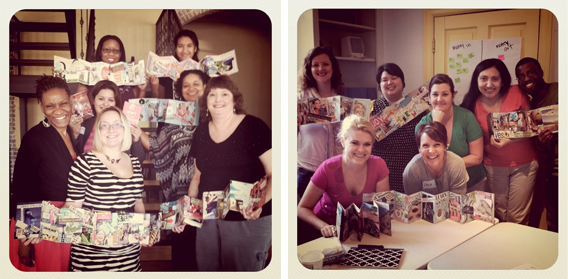
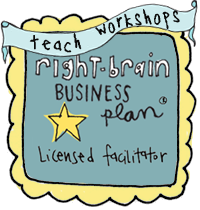 If so, the Right-Brain Business Plan® licensing program may be right up your alley! And if you sign-up by this Wednesday, October 31st you’ll save $200 before the price goes up plus you’ll get VIP passes worth $400 to a weekend business-building extravaganza.
If so, the Right-Brain Business Plan® licensing program may be right up your alley! And if you sign-up by this Wednesday, October 31st you’ll save $200 before the price goes up plus you’ll get VIP passes worth $400 to a weekend business-building extravaganza.
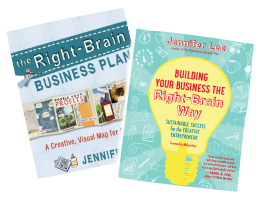
 Instead of hitting a brick wall, which is pretty unforgiving, you’re wrapped in a soft fleece. That simple word substitution takes you from something painful to something that’s strong, yet forgiving.
Instead of hitting a brick wall, which is pretty unforgiving, you’re wrapped in a soft fleece. That simple word substitution takes you from something painful to something that’s strong, yet forgiving.  Cass Mullane’s calm, comfortable approach consistently yields positive results for clients. Her business and personal coaching practice,
Cass Mullane’s calm, comfortable approach consistently yields positive results for clients. Her business and personal coaching practice, 
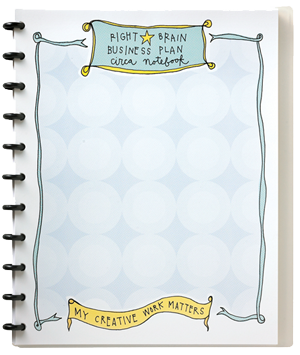 Plus, you get inside peeks into how both Steve and I use our Circa notebooks, a view of Steve’s bookshelf, and toward the very end Steve gives the best (hilarious and insightful) 1-line summary of the biography on Steve Jobs.
Plus, you get inside peeks into how both Steve and I use our Circa notebooks, a view of Steve’s bookshelf, and toward the very end Steve gives the best (hilarious and insightful) 1-line summary of the biography on Steve Jobs. 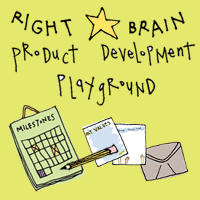
 Making way for creative action, Amy Egenberger, MEd., CPCC is a seasoned educator, life coach, artist and founder of
Making way for creative action, Amy Egenberger, MEd., CPCC is a seasoned educator, life coach, artist and founder of  I help heart-forward businesses create thoughtfully crafted plans for growth and sustainability. Starting your own business? Working on the one you already have? I love to inspire people to think critically, dream big, and clear out the cobwebs to let in the light and the joy!
I help heart-forward businesses create thoughtfully crafted plans for growth and sustainability. Starting your own business? Working on the one you already have? I love to inspire people to think critically, dream big, and clear out the cobwebs to let in the light and the joy! 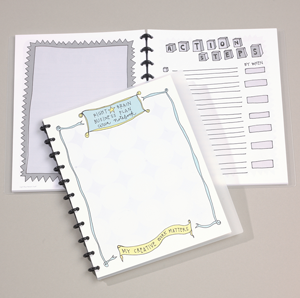
 For idea generation and planning, I love starting with paper, sticky notes, markers, index cards, Circa notebooks, and art supplies. The tactile, hands-on nature allows me to get messy and engage with my thoughts in a more tangible way. The process feels more open and malleable, which is great for the start of a project. Awhile back
For idea generation and planning, I love starting with paper, sticky notes, markers, index cards, Circa notebooks, and art supplies. The tactile, hands-on nature allows me to get messy and engage with my thoughts in a more tangible way. The process feels more open and malleable, which is great for the start of a project. Awhile back 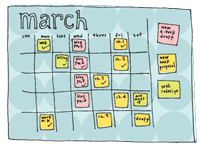 I do the analog/digital dance with calendars, too. When I’m initially mapping out a project, I need to see a physical calendar right in front of me in order for any of the milestone dates to make sense. Once I braindump and move my sticky notes around, things get clearer. And when I’m ready to lock in the dates, I like having them plugged into my Google calendar so I can block off work-time, stay on top of my schedule, and get sent appointment reminders. Once big to-do’s are done, I love walking over to my calendar and drawing a big, fat checkmark! Curious about how I use my wall calendar? In the first part of this
I do the analog/digital dance with calendars, too. When I’m initially mapping out a project, I need to see a physical calendar right in front of me in order for any of the milestone dates to make sense. Once I braindump and move my sticky notes around, things get clearer. And when I’m ready to lock in the dates, I like having them plugged into my Google calendar so I can block off work-time, stay on top of my schedule, and get sent appointment reminders. Once big to-do’s are done, I love walking over to my calendar and drawing a big, fat checkmark! Curious about how I use my wall calendar? In the first part of this 